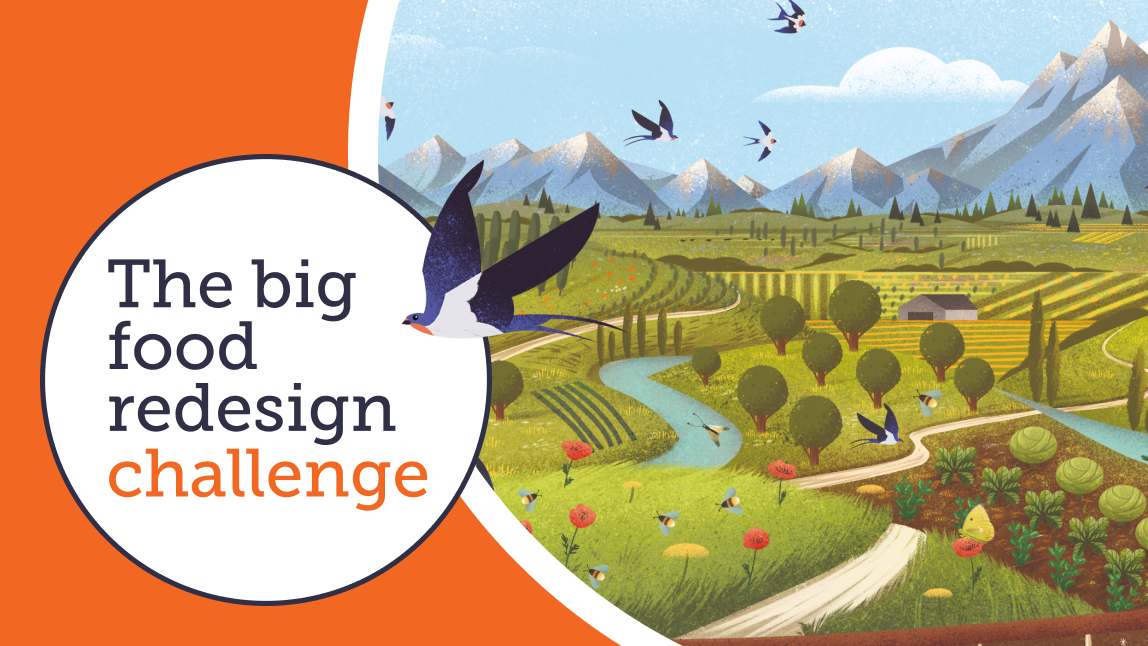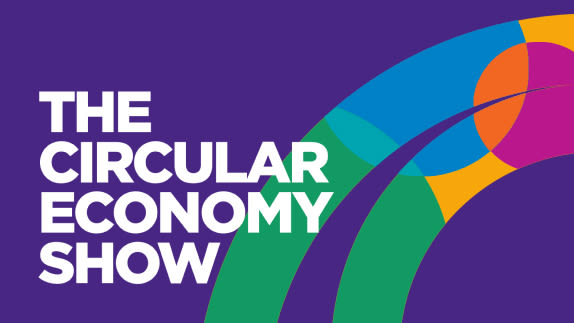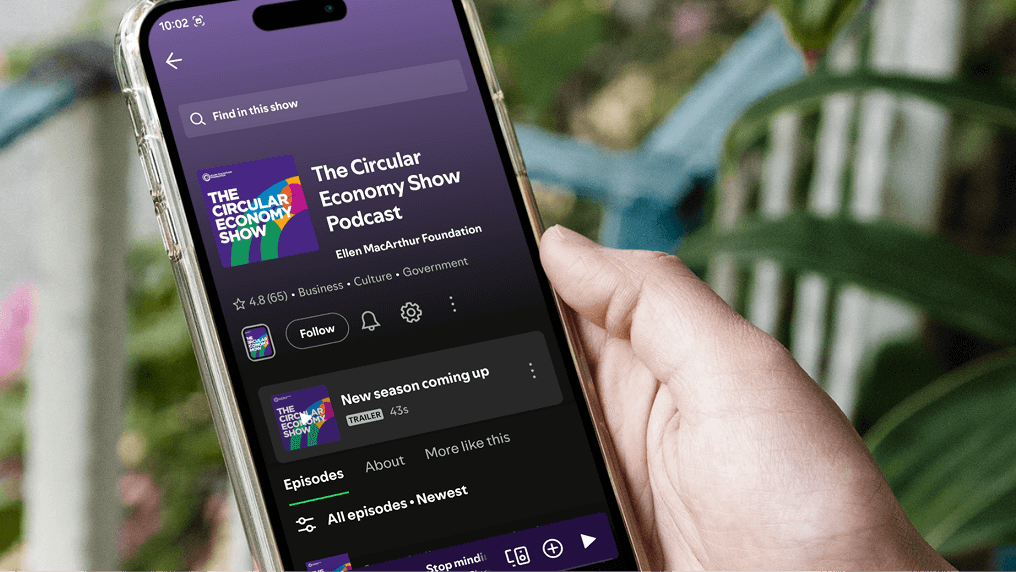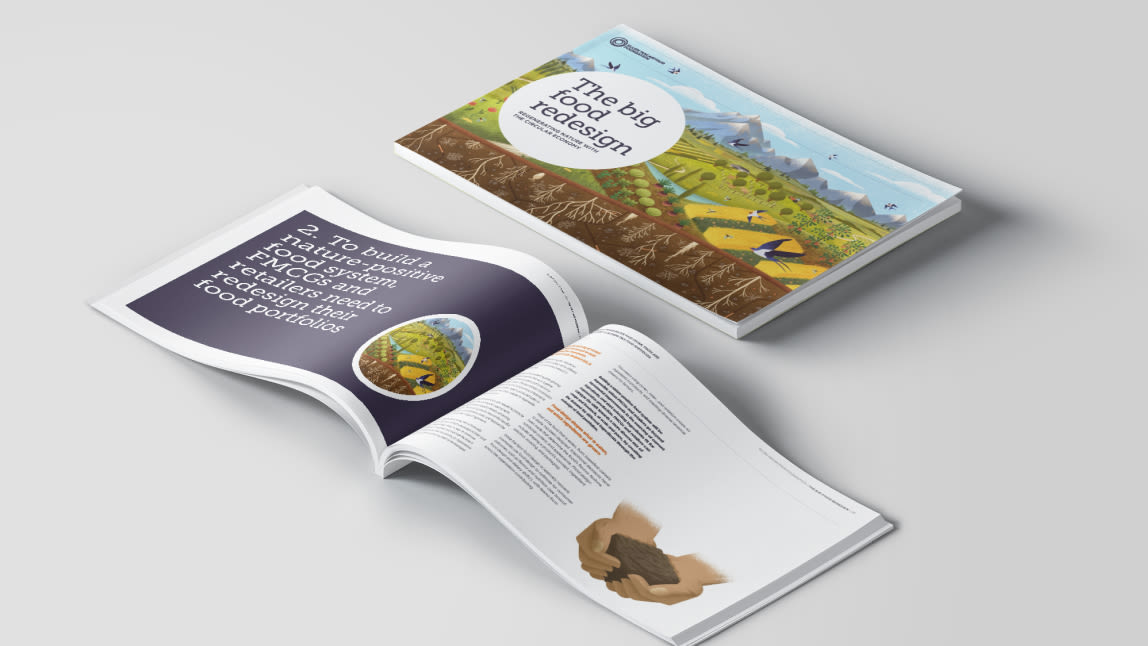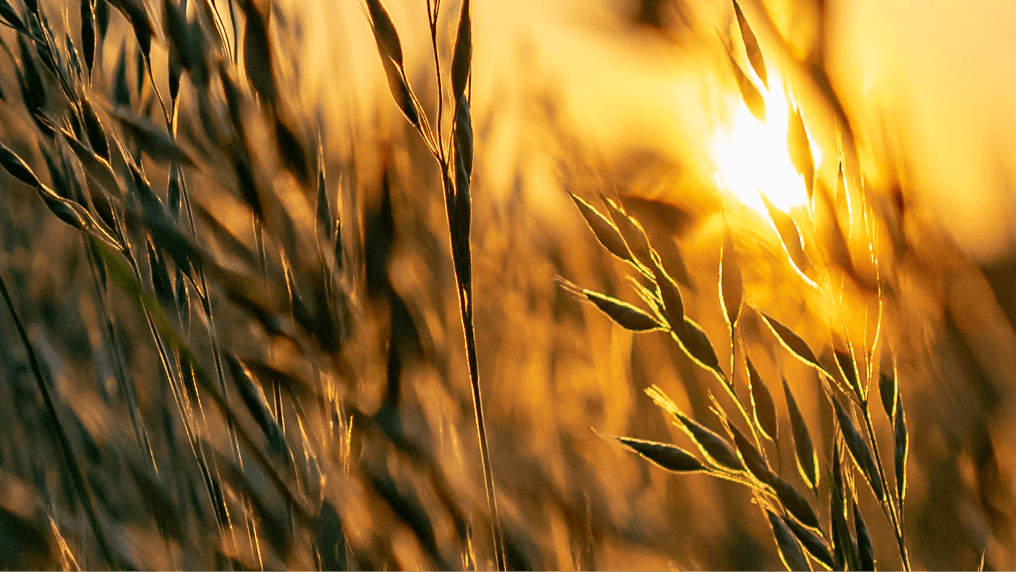What is regenerative production? And how can farmers help address the damaging effects our industrialised food system has on the climate and biodiversity?
In this episode, we’ll hear from Philippe Birker, co-founder of Climate Farmers, an organisation working to empower farmers.
We also visit Nunwell Home Farm to learn how they are using regenerative methods to improve biodiversity and soil health on their farm.
This episode was supported by players of People’s Postcode Lottery.
Transcript
Philippe Birker 0:00
I think one of the things that that that is a personal mission of mine is to basically put the farmer back at the centre of society. I think it's quite an amazing thing that we that we somehow managed to create a system where farmers are very detached from society, when it's literally the most important person in our society. Without farmers we can't eat, right, yet they're usually in the rural countryside, many people have never visited a farm in their entire lives. And also many of the companies that operate with them don't visit the farmers, they buy from middlemen, and the farmer gets the least amount of percentage of what's actually happening.
Pippa Shawley 0:34
When you think about where our food comes from, it makes sense to start on the farm and with the people who found the land.
Philippe Birker 0:41
It's not sexy to be a farmer, which basically means young people don't want to go into farming. Like no one, I don't know how it was for you, but again, I grew up on the countryside. No one in my high school wants to become a farmer. It has always been as something almost looked down on in society, right? Like in many, many cultures, we have the feeling if you don't do well in school, then you become a farmer.
Pippa Shawley 0:58
Welcome to the Circular Economy Show Podcast, I'm Pippa Shawley. And in this new five part series, we're looking at how we can produce our food in a way that helps nature to thrive. In the last episode, we learned about the damaging effects our industrialised food system has on climate and biodiversity, and how a circular economy for food involves produce that is diverse, low impact, and upcycled, all produced in a regenerative system. In today's episode, we'll dig into that last part, regenerative production, and meet some of the people exploring how we can grow our food in a way that is not only delicious and nutritious, but good for nature, farmers and business too. We just heard from Philippe Birker, co-founder of Climate Farmers, an organisation working to scale regenerative farming systems in Europe by working with the people who grow our food. His organisation believes that raising the status of farmers within society is the first step towards scaling nature positive farming. So what is regenerative agriculture?
Philippe Birker 2:06
For me, it's a very simple one, regenerative agriculture is, for me, agriculture which regenerates the soil health. That's it. Like essentially, it's just I always say, it's just the mindset shift from a focus on yield to focus on soil health. If you are increasing your soil health, then you are regenerating your local ecosystem inadvertently.
Pippa Shawley 2:25
And farmers are key to making this happen, says Philippe.
Philippe Birker 2:28
So even people who come from farming generations of 5, 6, 7, 8 generations, they stop in this generation, because they can do something else. And they don't have the feeling that this is something that's well regarded by society, which led to the fact that the average age of farmers in the European Union is 58 years old. And obviously, people who are 58 years old, who are five years before retirement, they're not going to change their ways anymore, drastically, nobody would want to do that. So the first big issue that we saw is, we need to make it attractive again, to be a farmer. And we need to give farmers the respect that they should get from society, if they are farmers in general and especially if they're regenerative farmers, who are next to providing nutritious food, also regenerating our ecosystem.
Pippa Shawley 3:09
So why do we need farmers to adopt practices with regenerative outcomes? Philippe explains what happens when those are put in place.
Philippe Birker 3:18
So the very interesting thing is that the plants are obviously embedded into the ecosystem in which they existing right, so plants are taking the nutrients on the one hand, from the sun, and from the rain, but mostly also from the soil. And what happens in a natural ecosystem is that you have a lot of biodiversity going on, you have a lot of different plants above the soil. And then below the soil, you have an amazing abundance of life. And you have... I always call it like a Turkish bazaar. So you have a lot of trading that's going on between the roots of the plants, and mushrooms, which are kind of like the tradesmen, which are basically like like the Dutch of the soil, you could say, which are bringing basically anything, any kind of nutrients from one kind to the other. And one of them is, for example, also carbon, which gets traded against sugar against phosphorus, etc. And all of this is going down below the soil level, right. And the more you are planting, and the more plants are growing, the more the roots are growing, and the more this trading is growing. So if you have healthy soil, and it's full of these white little fibres, which you see everywhere, and this is what is amazing, a lot of produce healthy, nutritious food, and in order to increase biodiversity, increase soil water storage capacity, which, for example, reduces risk of flooding, reduces risk of drought, et cetera.
Pippa Shawley 4:30
So if this is the ideal scenario, where are we at now?
Philippe Birker 4:34
Now what we are doing is, instead of having all of this diversity, we are planting one field, mono crop, just one thing, just wheat, just corn, because it's easier to harvest. So it's economically focused on more efficient harvesting. But the plants are not receiving the nutrients that they need to. They're not receiving what they would normally need to grow. So what do we do? We edit externally.
Pippa Shawley 5:01
To move away from the intensive mono crops Philippe's talking about, we need to rethink and redesign what we grow. The Ellen MacArthur Foundation's Big Food Redesign Report looked at how this could work, as the Foundation's Food Lead, Reniera O'Donnell, explains.
Reniera 5:16
We live in England. And you know, we have this beautiful landscape, which is a rapeseed field and a wheat field, and maybe an oat field, and they do look very beautiful. But, you know, nature needs diversity. And so in the report, we talk about how potentially we could redesign our cereal products. We could swap out, say, 40% of the wheat flour for something like pea flour. Now the reason we say pea flour is because peas are legumes, and one of the things that legumes are really, really good at is locking nitrogen into the soil. So if, instead of having a single wheat base here, you now have a cereal that's made of wheat and peas, we can say to our farmers, well, you can plant your peas in between your wheat, locking nitrogen in the soil, creating diversity in the field, probably meaning there's less need for nitrogen inputs to fertilise the soil. And at the end of the day, nature becomes better off soil health is rebuilt, biodiversity starts to come back because different insects feed off different different plants. So it's about rethinking how we can, you know, change the products, and the ingredients that go into our products, to enable farmers to do what's right for the land.
Pippa Shawley 6:26
To combat the harmful effects of intensive agriculture, this regenerative method needs to happen on a large scale. But is that even possible? Back to Philippe.
Philippe Birker 6:36
So a lot of the farmers that we're working with are in the hundreds of hectares. And I actually believe that, especially at very large scale farms, you almost need to run it regeneratively, especially if we're talking about animal management, for example, right, like in nature, animals are an essential part of any ecosystem. So some of the farmers that we have in Portugal, like we have a farm which is for example 1400 hectares. And essentially the best way to manage the farm is to once make an holistic grazing plan. So to see how the animals could move in the best way possible in nature, and then they essentially, you you take a look at in nature, like we have the situation that that cows, for example, which have a very negative view right now in society, right, as a climate killer. They are ruminants. So they have a stomach, which is perfectly designed to eat grass, in a similar way to koalas with eucalyptus, or panda bears with bamboo. And what we're doing is we're putting them in stables, and we're feeding them corn and soy and things that they shouldn't eat. And then they get sick and we put them antibiotics and then we eat the meat and we wonder that we get sick. Or we have a large scale farm. We... ideally you have a grazing, you can integrate trees in there, you could have an agroforestry system in there where trees provide shade. For example, in southern Europe for the for the cows, the cows are grazing under them, they're eating the grasses. Due to that the grass kicks into a perfect symbiosis. It basically... wheat grows stronger after the cow has left, and it stores massive amounts of carbon in the soil, more than trees do, the cows however, need to be there as they are in nature as a grazing herd for one day, and then they move on.
Pippa Shawley 8:18
This system is a win-win for farmers, Philippe believes.
Philippe Birker 8:21
So what you do, how you manage a large scale farmers, how many of our farmers are doing this, like this one, for example is, they're essentially grazing the animals one day, and then they move them the next day. And it's actually very little effort, because once you set up the fencing, you just open one gutter, and the cows run through on the next field because they know there's fresh grass on the other side. So they love to go over there. So you don't even have an effort with it. And in that way you can design the plan in the beginning of the year, which is what we're doing with the farmers. You create this grazing plan. You follow the grazing plan, and then you have your grass, regrown and regenerated every three to six months, much lusher than before. Again, it stores water in the soil, you conserve your water a lot better in dry areas in southern Portugal. The cows have very nutritious, very delicious meat, which also has much higher nutrient density. There are already some studies out there showing this already. And they have a much happier life because they are living as they should be living in nature. So it's essentially a win win win situation.
Pippa Shawley 9:18
One of the other benefits of regenerative farming practices is that it attracts ambitious young people who are keen to reestablish the links between farmers, society and nature that Philippe believes have been lost. I went to visit Nunwell Home Farm, close to our office here on the Isle of Wight, an island just off England South Coast, to meet Hollie Fallick.
Hollie Fallick 9:45
My name is Hollie and I am a young mum and young farmer. And together me and my best friend from childhood, Francesca, took on this farm at Nunwell and we took on 120 acres of pasture land. If you came to the farm, you'd see we have a herd of Belted Galloway cows who are currently like grazing on the hilltops. And we have native breed pigs. At the moment, we've got a mixture of Berkshire pigs, Saddlebacks, and Tamworths. And we've got a load of native breed chickens for eggs too.
So these guys are Belted Galloways, which are a native breed to Scotland. And we chose these guys, because they are basically one of the hardiest cows you can get. So these guys can live out in anything. And we wanted cows that were super hardy, good mothers, that we didn't have to really assist with anything about them, they can just live outside, they sort themselves out, they can live off pretty much nothing.
Pippa Shawley 10:45
First time farmers, Holly and Francesca wanted to create a business that produced food in harmony with nature.
Hollie Fallick 10:52
So sort of our outlook when we first took on the farm was to farm totally alongside nature. So our sort of vision for the estate was like nature-first. And then we sort of built our farming model around what would work to enhance sort of soil health and biodiversity in this landscape. So this piece that we've taken on was sort of conventionally managed for the last, like 50, 60 years. And so we, we felt really strongly that we wanted to totally do a sort of full stop on pesticides and herbicide use and just go straight to managing the farm sort of holistically. And yes, are really built our model around sort of a nature-first approach.
Some of the sort of key things that are different is that we don't sort of have a blanket rule on chemical, fertilisers, herbicides and pesticides, which is quite unusual, actually, even in sort of permanent pasture land, a lot of people are still using herbicides and fungicides and things and and also, we are one of our real sort of key things that we're trying to do is build up species that we've got here. So in our pastures, we're not just thinking about, like, fodder as energy for the cows, we're thinking about it as sort of like more of a holistic system. So having a wide, wide variety of plants, and flora and fauna, is beneficial for wildlife and for animals. So I'd say those are two of the most key aspects that we focus on.
Pippa Shawley 12:19
We heard a lot in the last episode about the need to redesign our food system. But where does design come in on the farm?
Hollie Fallick 12:27
Before we came to doing livestock farming, we were running a small no dig market garden, sort of like an organic vegetable production. And we really enjoyed that. But it's quite small scale, like growing, growing vegetables at scale, is a really intensive way of using land. And the piece of land that we took on was pasture. And so there wasn't any availability to turn it into anything other than meat, really. So that was sort of our primary reason was looking at the place that we are, looking at the land that we've taken on and then building a business model to suit that.
Yeah, so design something that's sort of been sort of evolving on the farm over the last year. Although, we've had a design in mind, we've been really observing where we are and the different landscape that we've been farming in and how our animals react to that landscape and, and what what sort of things that we've seen that we didn't expect to see. And so our design has been evolving definitely over the last year.
Pippa Shawley 13:24
As Holly explains, not all land is suitable for growing crops. In fact, around 60% of grassland used for agriculture is marginal land unsuitable because of the topography, soil type and climate conditions. Grazing livestock in a balanced way can provide valuable ecosystem services, such as carbon sequestration within soils, and can also maximise habitats to support biodiversity. Back to Hollie to talk us through how the landscape informs their design on the farm.
Hollie Fallick 13:54
So in the next few weeks, that's what we need to do is basically design our grazing for this year. So we will sit down with a cup of tea and a piece of cake. And we will lay out all the maps of the farm and work out exactly where we're going to graze our animals, when, where we're going to cut hay, where we're going to leave, where we might plant trees, like, we need to make a design for the whole year and sort of have an idea for a plan. So like this piece of downland we'll now leave, we might graze it once in mid summer, but then we'll leave it again because we want to keep this for winter for example, because this is high up and it's not so muddy up here. It's got a lot of chalk in the ground. And so there's a lot of things like that that you have to be thinking ahead. You can't just graze everything willy nilly or or think it doesn't matter, because you have to be quite intentional about where you're grazing, from, from keeping the cows happy, but also from an ecological perspective. Like we want to keep as many of our grasslands as long as possible and capturing all that co2 and doing their photosynthesis.
Pippa Shawley 14:55
Farming livestock, particularly cattle is often criticised for the methane it produces. However, as Philippe discussed earlier, Hollie believes it's important to think holistically when it comes to rearing animals.
Hollie Fallick 15:07
So, in terms of manure, I think manure, when, when your cows are managed properly and on permanent grasslands, manure is actually really important to keeping the health of that soil, so like manure is criticised, but actually, from what we understand, and from actually from what government will pay you to do, they want these native breed animals on this pasture land, because that is actually the best way of keeping these soils healthy, keeping this in the right sort of way. So like different different pastures around the estate will need different things, so like this chalk downland, you want grazed really, really hard, because you want that for all the different species that might come up in a chalky place, but somewhere else, you might want longer grass. And so in all those aspects, you're going to want manure. So manure is just cycling of nutrients, cycling of carbon, round and round in a circle. And actually, our manure, where we don't use any artificial wormers or antibiotics or anything like that, our manure goes on to the ground and gets used up by soil organisms, dung beetles, worms, all of that sort of thing really, really quickly. Because it's, it's, it's full of life. And it's not like a sterile cow pat that just sits there. So we've been.... we're not worried about poos at all.
Pippa Shawley 16:23
And what about those cow burps that were often warned about?
Hollie Fallick 16:26
In terms of cows farting, and burping. Obviously, that's sort of criticisec a lot at the moment for producing a lot of methane, which they do. And methane is another thing where, when you take it in isolation of a cow, you know, burps out all this methane, and it's terrible for the planet, actually, that methane is really short lived. I know it's quite potent, but it's really short lived, it's only like in the atmosphere for 12 years. And actually cows can recycle that methane, once it's gone into the atmosphere, and it's turned into co2, cows, then, when managed properly on grasslands, reabsorb that co2 into that pasture. And so it's sort of a circular system. I think that's the problem with taking one thing in isolation and saying, Oh, it's a bad thing. You're not You're not looking at it as a holistic context, you're not looking at where does sort of the circular aspect of that come in. And that's really key when you're when you're looking at anything, you can't just take one aspect out and expect it to make sense.
Pippa Shawley 17:17
While farmers like Hollie and Francesca at Nunwell are already on their journey of nature-positive farming, Philippe says it's vital to support and empower those farmers who are still stuck in the industrialised system.
Philippe Birker 17:29
Farmers know their land, they want to do good for the soil, they want to take care of the plant, they want to see the land thriving, they want to see the animals thriving, they love their land, and they are just stuck in a system, which forces them to focus on yield. And in order to get the yield that they need to make the farm survivable, they need to use the pesticides. So we just have to help farmers to step out of that, we have to empower farmers, we have to pay them for ecosystem services. And then they will figure it out by themselves, maybe with a little bit of guidance here and there, what works in that context, because I promise you, every farmer is going to observe what's going on the land, every farmer is going to observe the cycles and has observed the cycles. And these years of 10, 20 years of knowledge of the local context, we can never replace from the outside. So I'm not a big fan of telling you should be doing this, this, and this, I'm more a big fan of saying, hey, what do you think needs to happen on your land? And what do we need to do to help you to actually take care of your land, and then farmers will be the best ones at regenerating their soils.
Pippa Shawley 18:31
So we've heard that by redesigning the way our food is grown, it can be produced in harmony with nature. But farmers are only at the beginning of what can often be a long supply chain to get food into our kitchens. In the next episode, we'll meet three brands who use diverse, low impact, and upcycle ingredients to produce food using circular design, and according to the principles of a circular economy. I hope you can join us then. Thanks for listening. This episode was supported by players of People's Postcode Lottery. The Circular Economy Show Podcast is published by the Ellen MacArthur Foundation and produced by Skinny Mammoth Media. Thanks to our contributors, Philippe Birker and Hollie Fallick.

